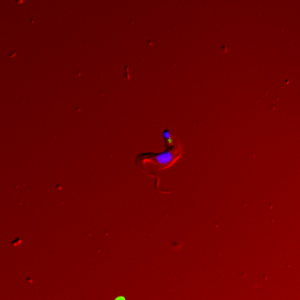Novel drug tools for neglected diseases
Novel drug tools for neglected diseases: Development of tools for target identification of nitrofuran-carboxyamides with potent trypanocidal activity
Prof. Terry Smith and Dr Gordon Florence
School of Biology

Parasitic protozoan disease, such as African sleeping sickness, Chagas disease and leishmaniasis are some of the most neglected diseases in the world. The WHO have highlighted these diseases as a priority as a third of the world’s population are at risk; it effects millions of people and represents a huge percentage of the world’s disease burden. Current drug treatments are woefully inadequate, as many suffer from problems of toxicity, difficulty of administration in the field, cost and rapidly emerging parasite resistance. Therefore, there is an urgent need to identify novel therapeutic targets and to develop effective lead compounds that are safe, cheap and easy to administer against these protozoan diseases.

We have been optimising novel analogues of nifurtimox (a current front-line drug against some of these diseases), but with activity ~1000-fold more potent and without the side effects that nifurtimox has. Importantly, these novel analogues are relatively easy to synthesise and therefore cheap, and they are targeting a different, but still an essential biochemical process to those targeted by nifurtimox.

We are developing and utilising novel tools that allow us to elucidate the mode of action of our novel drugs, by identifying the protein target(s) they interact with and their subsequent metabolism. Collectively, these findings will have important implications for the future therapeutic treatment of African sleeping sickness, Chagas disease and possibly leishmaniasis. Our research involves utilising a multi-disciplinary approach spanning chemistry, biochemistry and molecular parasitology. The chemical technologies developed will be broadly applicable to protein target identification in general with the potential to simplify this challenging facet in the drug discovery process.
The figure at the top shows a stained trypanosome parasite and a chemical structure of one of the simplest chemical probes we are using to elucidate how our new compounds work within the parasite.

